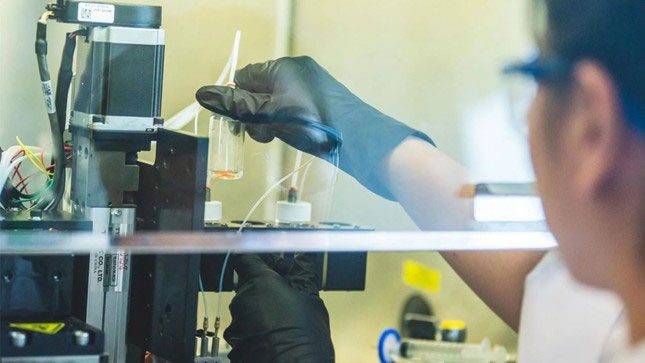For the first time in the world, scientists have 3D printed biological skin during live surgeries on mice, paving the way for new treatment methods in dermatology and reconstructive surgery for humans.
Researchers at Pennsylvania State University in the United States have successfully utilized 3D bioprinting technology to add layers of skin to wounds during surgery to aid in recovery. This achievement has been realized in animal models but may also hold significant benefits when applied to humans.
Ibrahim Ozbolat, a professor of biomedical engineering and neurosurgery at Pennsylvania State University and the lead researcher, stated: “Reconstructive surgery to address facial or cranial injuries from trauma or illness is often not perfect, leading to scarring or permanent hair loss.” This can often result in reconstructive procedures that are aesthetically distressing for patients.
3D bioprinting is a relatively new technology that allows living cells to create tissues and organs by printing them with suitable bio-inks. The applications of this technology are diverse.
While today, 3D bioprinting technology is still being utilized in clinical trials, research at Pennsylvania State University indicates that this technology is rapidly approaching maturity.
Components of 3D Bioprinted Skin
The research team began with adipose tissue, commonly referred to as fat, as it is an essential component of the extracellular matrix. These extracellular proteins and molecules are responsible for providing structure and stability to tissues. This is the first component of the bio-ink used for skin printing.
In collaboration with Dino Ravnic, an associate professor of surgery at the Penn State College of Medicine, the research team also harvested stem cells from this adipose tissue. Capable of differentiating into various cell types depending on their environmental conditions, stem cells are the second component of the bio-ink used in the process.
The third and final component of the bio-ink is a coagulation solution, which helps bind the components together to form tissue at the site of injury.

Different layers of human skin and its components. (Graphic: iStock).
Printing Multiple Layers of Skin During Surgery
Previous efforts in 3D bioprinting of skin involved printing thin layers. Professor Ozbolat and his research team have made a significant breakthrough by printing multiple layers of skin during surgery.
By utilizing the three components of the bio-ink, researchers have, for the first time, printed the bottom layer of the skin, or the subcutaneous layer, which consists of connective tissue and fat. Professor Ozbolat noted: “We printed directly at the wound site with the goal of forming the subcutaneous layer, which aids in healing, promotes hair follicle formation, and regulates temperature…”
The researchers were also able to print the dermal layer beneath the skin. The top layer, known as the epidermis, which is the visible part of the skin, does not require 3D bioprinting and forms naturally over two weeks.

Researchers at Pennsylvania State University working with a 3D bioprinter used for printing skin layers. (Photo: Penn State).
Further research could help regenerate hair at injury sites and improve the natural appearance after reconstructive surgery.
Professor Ozbolat stated: “With the capability of fully automated bioprinting and clinically compatible materials, this technology could significantly impact the clinical transformation of precisely reconstructed skin.”
The research findings have been published in the journal Bioactive Materials.




















































